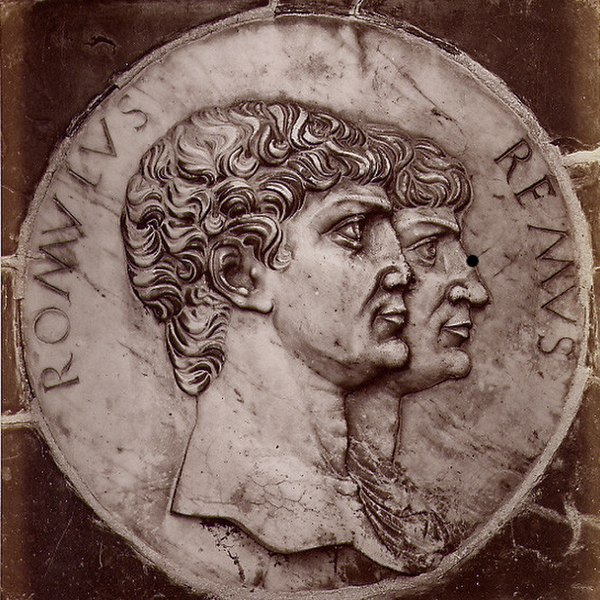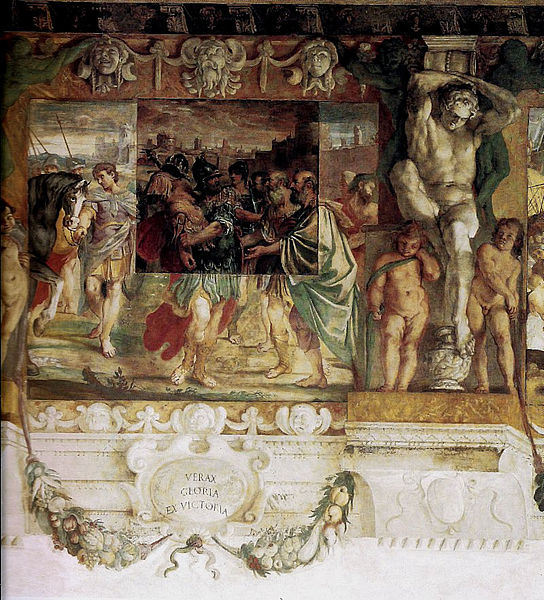Romulus was the legendary founder and first king of Rome. Various traditions attribute the establishment of many of Rome's oldest legal, political, religious, and social institutions to Romulus and his contemporaries. Although many of these traditions incorporate elements of folklore, and it is not clear to what extent a historical figure underlies the mythical Romulus, the events and institutions ascribed to him were central to the myths surrounding Rome's origins and cultural traditions.
Romulus and his twin brother Remus from a 15th-century frieze, Certosa di Pavia
A statue of a She-wolf depicts the twins suckling.
Roman Denarius with Romulus as Quirinus
Romulus dedicating the temple to Jupiter Feretrius
The founding of Rome was a prehistoric event or process later greatly embellished by Roman historians and poets. Archaeological evidence indicates that Rome developed from the gradual union of several hilltop villages during the Final Bronze Age or early Iron Age. Prehistoric habitation of the Italian Peninsula occurred by 48,000 years ago, with the area of Rome being settled by around 1600 BC. Some evidence on the Capitoline Hill possibly dates as early as c. 1700 BC and the nearby valley that later housed the Roman Forum had a developed necropolis by at least 1000 BC. The combination of the hilltop settlements into a single polity by the later 8th century BC was probably influenced by the trend for city-state formation emerging from ancient Greece.
Capitoline Wolf, sculpture of the she-wolf feeding the twins Romulus and Remus, the most famous image associated with the founding of Rome. According to Livy, it was erected in 296 BC.
Romulus and Remus on the House of the She-wolf at the Grand Place of Brussels
Funerary urn of the Villanovan culture, precursor to Etruscan civilization
Model of archaic Rome, 6th century BC








